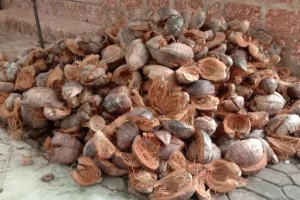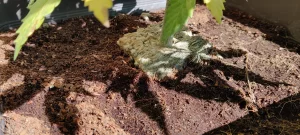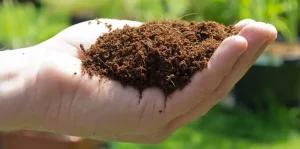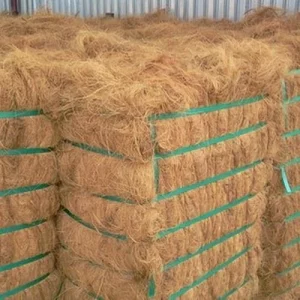English
Did you know that you can reuse coir substrate? Just know and follow a few rules, which we will discuss in this article.
When the growing cycle is over, the age-old question of “Where to go with it?” arises. Not all of us have a garden to throw the used substrate on the compost heap or to enrich the bed with it. While conventional peat substrates are not suitable for reuse, coco is different – it can be used for multiple cycles. This saves you lugging around bags of old and new substrate and, of course, some money.
Coconut substrate decomposes more slowly than peat and is also more resistant to rot and mould. Some manufacturers state that it can be used for up to 3 growing cycles. At the same time, however, certain rules must be observed to ensure that your next cultivation goes smoothly.
Rules for reusing coir substrate:
Choose a quality coco substrate
Not all coco substrates are suitable for reuse. A substrate with a low fibre ratio but a high proportion of ‘flakes’ from the crushed husk is ideal. The degree of buffering, i.e. the process of conditioning the coconut with calcium and magnesium, is also important. The ideal substrate for reuse needs to be heavily buffered. Coconut substrate can usually be bought in specialist grow shops.
Check the EC
The salt content of the coco should be checked before reuse. These are fertiliser residues that accumulate in the coco substrate in the form of mineral salts. This greatly affects the EC and if it is too high, it could damage the young plants in the next cycle. You can measure the EC from the ‘run-off’, i.e. the excess solution that flows through the pot when watering. However, a more reliable measurement is the 1:1.5 method.
Do not use recycled coco for seedlings or young cuttings due to increased EC. These are very sensitive to all kinds of variations. Always use new coconut substrate for seedlings. When planting young cuttings in a pot with recycled substrate, make a hole in the pot and fill it with fresh coconut. This will give the young roots new substrate around them before they grow into the recycled coir substrate.
Definitely don’t skip flushing
Furthermore, the “flushing” at the end of the growing cycle must be observed. This can last 2-7 days, when no fertiliser is added. On the other hand, it is advisable to give double the amount of an enzyme preparation at this stage, which breaks down the old roots in the substrate and cleans it for the next round. Make sure that the coconut remains moist at all times. Enzymes should be added throughout the growing cycle with recycled coco.
Beware of pests
Watch out for all sorts of insect pests. If you find anything living in the substrate, you’d better start with a new coconut. Typical visitors to the coconut substrate are little black fly called fungus gnats, but there may also be silkworm and other vermin that could threaten the plants in the next round. If you’ve had problems with them, be sure not to reuse the old substrate!
How to recycle cocos ?
After harvesting, take the rest of the plant and shake off the coir substrate over the container. You should only have a piece of stem and root ball left in your hand. Afterwards, check the substrate for any remaining roots. Once the recycled substrate has been moistened, you can plant.
What about the already recycled coco ?
Once the recycled substrate can no longer be used, you can put it directly into the composter and after a while you will have a high-quality soil fertiliser for further use.
Based on source: softsecrets.com
Published by Kotelnik
18/07/2022choose and buy cannabis seeds from our offer
our pleasure






























I’m recycling, nice article
Can you elaborate? Did you use the procedure from this article or did you modify something. I’m quite interested. I grow mostly in coconut and outdoors and buying coconut all the time is quite expensive.